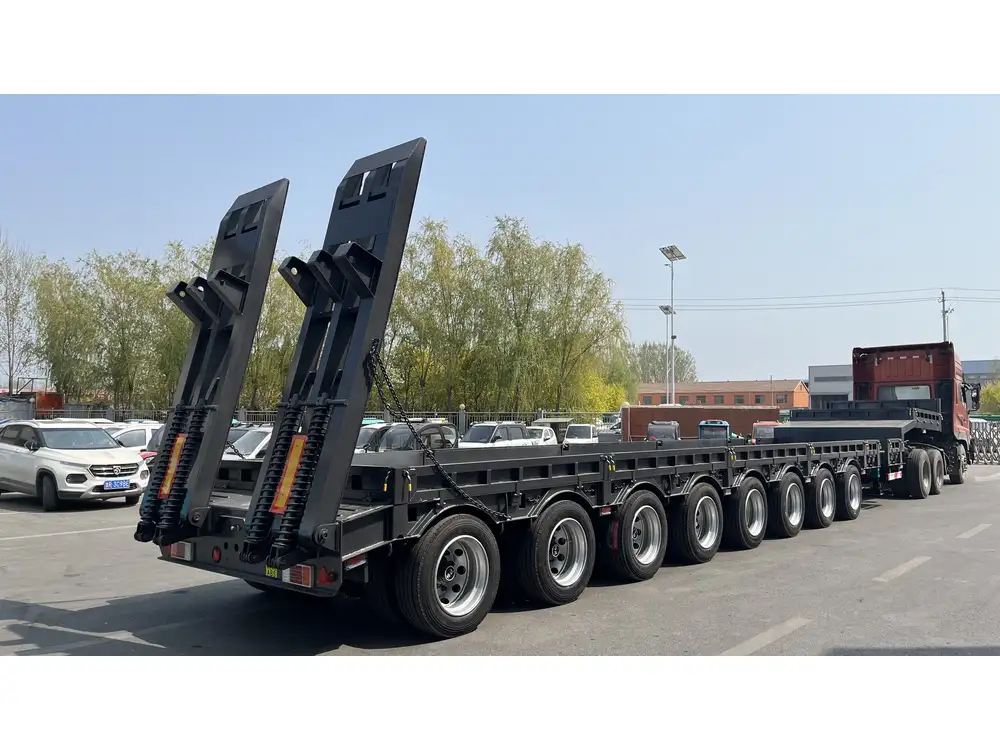Understanding where to locate the Vehicle Identification Number (VIN) on a semi trailer is crucial for owners and operators alike. This number is not just a simple string of characters but serves a myriad of purposes, including identification, registration, and maintenance records. Below, we outline the key areas to inspect for the VIN, why it matters, and additional insights that could prove beneficial for semi trailer usage and maintenance.
What Is a VIN and Why Is It Important?
The VIN is a unique 17-character code assigned to every vehicle, including semi trailers. It serves several vital functions:
- Identification: Provides a precise identity for vehicles in the transportation industry.
- Registration: Facilitates the proper registration and regulation compliance.
- Insurance: Essential for securing accurate insurance estimates.
- History Tracking: Helps potential buyers review the trailer’s history, including accidents, repairs, and previous ownership.
Common Locations for the VIN on Semi Trailers
Finding the VIN can sometimes be a challenge due to the varying designs of semi trailers. Below we outline the most common locations you can check:
| Location | Description |
|---|---|
| Front Left Corner | Typically on a plate or label attached to the left side of the front bulkhead. |
| Near the Kingpin | Often found on the frame of the trailer near the kingpin, the pivotal point for connection. |
| Rear Crossmember | Located on one of the crossmembers at the back of the trailer. |
| Driver’s Side Frame Rail | Inspected along the driver’s side frame rail, may be stamped directly onto the metal. |
| Inside the Door Frame | Occasionally, the VIN is placed on a label affixed to the interior of a side door. |

Detailing the Locations
Front Left Corner
This is commonly regarded as the primary location. Manufacturers usually place a metal plate here, inscribed with the VIN and other vital specifications of the trailer.
Near the Kingpin
The kingpin assembly can sometimes be obscured by dirt or rust, so it may require a thorough inspection. The VIN located here is often engraved directly onto the metal frame.

Rear Crossmember
For rear-ended trailers or those with increased wear-and-tear, checking the rear crossmember is advisable. As it is often exposed to the elements, corrosion can cause the number to wear down, making it more difficult to read.
Driver’s Side Frame Rail
Taking a closer look along the lengths of the frame rail on the driver’s side may unveil the VIN stamped directly into the metal. This method often requires a flashlight due to less visibility.
Inside the Door Frame
Some semi trailers, particularly those with side doors, may carry the VIN on a label fixed within the door frame. This area is typically well-protected from the elements, preserving the integrity of the number.

Additional Considerations When Locating the VIN
Maintenance Records
Whenever a VIN is located, make it a priority to maintain a record of its specific location. This can simplify future inspections, especially for routine maintenance or if changes in ownership occur.
Condition of the Area
Pay attention to the overall condition of the area where the VIN is located. If the surroundings seem corroded or damaged, there might be a chance that the VIN itself is compromised. Regular cleaning and rust-proofing can be beneficial.

Lost or Illegible VIN
In situations where the VIN is lost or illegible, some steps may be taken to retrieve this information:
- Manufacturer Contact: Reach out to the manufacturer or dealer with the trailer’s specifications.
- Registration Documents: Check existing registration documents.
- Insurance Provider: Consult with your insurance company for any details they may have on file.
Legal Aspects Tied to VINs
State Regulations: Different states have unique regulations surrounding VIN visibility and condition. It’s essential to be aware of your jurisdiction’s rules to ensure compliance and avoid potential fines.
Commercial Use: For those operating semi trailers for business purposes, having a clear and accessible VIN can aid in compliance with federal transport regulations.
Importance of Keeping VIN Visible
To comply with regulations and promote ease of identification, maintaining the VIN’s visibility is crucial. Here are a few strategies:
- Regular Inspections: Conducting routine checks can help ensure visibility and readability.
- Cleaning: A simple cleaning may ensure that dirt and grime do not cover the VIN.

FAQs About VIN on Semi Trailers
How Many Digits Are in a VIN?
A VIN typically contains 17 characters, combining numbers and letters that provide essential information including the trailer’s manufacturer, attributes, and production year.
Can VINs Be Changed?
In general, VINs should not be altered. Any changes can indicate fraudulent activity. However, in specific cases, such as theft recovery, legal authorities may handle changes through the proper channels.

What to Do If You Cannot Find the VIN?
If, after thorough searching, you’re unable to locate the VIN, consult with the manufacturer or a professional in vehicle identification. They may offer guidance on how to legally replace or retrieve your VIN.
Conclusion
Identifying the location of the VIN on semi trailers is vital for various reasons, encompassing legal, insurance, and operational aspects. Knowing where to look—be it the front left corner, the area near the kingpin, the rear crossmember, the driver’s side frame rail, or inside the door frame—can make a significant difference in managing compliance and ensuring appropriate maintenance.
Having this knowledge empowers trailer owners and operators alike to engage in responsible management practices that streamline insurance processes, aid in resale, and help maintain the trailer’s operational integrity. Routine inspections and good maintenance habits surrounding the VIN area can enhance the longevity of the semi trailer while preserving its value.
As the transportation landscape continues to evolve, remaining informed about vehicle identification ensures that semi trailer operators can operate with both compliance and confidence.



